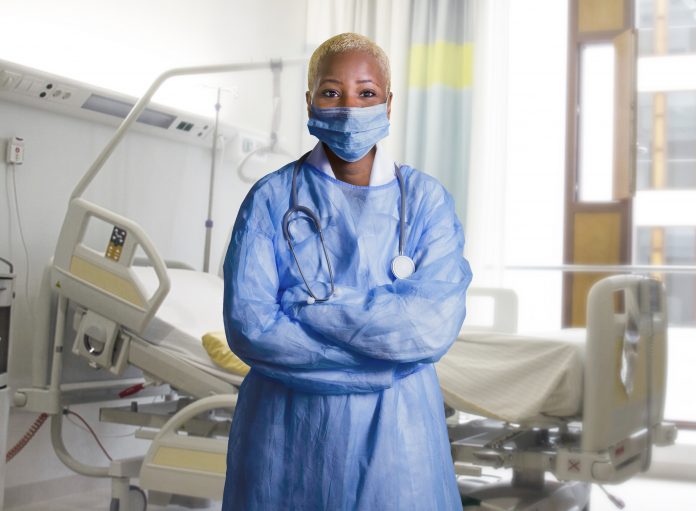James Duez, CEO of intelligent automation firm, Rainbird, explores how automation can be used for delivering the effective risk assessments that our front-line workers deserve
As part of the complex and critical process of supporting the country’s transition back to normality, the NHS and its occupational health teams are faced with the colossal task of advising on public safety. In addition, they must assess the risks facing thousands of their hospital staff colleagues and make decisions about who should or should not come into work and help fight COVID-19. NHS workers need to have confidence that they are not being exposed to undue levels of risk from the virus, as they protect us all.
These decisions on the health of NHS front-line workers are critical to the herculean efforts of the entire organisation; the health service must ensure that everyone who can work is working and preventable illnesses never occur.”
With no national standard for occupational risk assessments in place, managers and HR teams need to determine whether workers should be shielded, referred for a health assessment, or cleared to work in various settings – such as in clinical/non-clinical areas or from home. To make this possible, a thorough and reliable risk assessment must take place for each worker.
Ever-changing, complex guidance
Another issue for trusts to consider is that of subtle differences between government guidance and hospital advice – government guidelines are often more complex than a simple yes or no answer. Without consistent, centralised and contextualised advice, unevidenced decisions could be made. Understandably, guidance and regulations are also constantly changing, and hospitals are expected to quickly adapt their practices and policies accordingly – while weathering the resulting administrative storm.
The wellbeing of BAME front-line workers
Recent NHS data revealed that only 23% of health trusts had risk assessed BAME front-line staff, following findings confirming that these individuals are at higher risk from COVID-19. This, coupled with NHS England mandating that hospitals and other NHS employers must complete risk assessments before the end of July, shows us that urgent action is needed to adequately protect our front-line workers.
Privacy
Risk assessment for staff does come with its complications. For example, there is a significant matter of privacy to consider. Many people will be understandably hesitant to disclose sensitive (yet potentially crucial) details to line managers. All workers deserve to have full confidence that their private information will be used only where absolutely necessary. There’s a balance to be struck: having visibility of complex data, such as which colour of inhaler a staff member uses and how often is vital (while recording a positive HIV diagnosis, for example, is not), and providing assurances that this will be handled with care is essential. Without full visibility of the granular, specific and up-to-date circumstances of every NHS worker, we cannot have clarity about the risk COVID-19 poses to them.
How trusts are taking control
To overcome the challenges outlined above, a growing number of NHS trusts are utilising the power of intelligent automation to manage risk more accurately, responsibly and efficiently. Intelligent automation affords occupational health teams time and managers the tools to effectively plan their resources. NHS front-line workers can share their details via an interactive chatbot-like experience, allowing intelligent automation algorithms to evaluate a range of complex and nuanced factors. These include age, health history, cultural/religious beliefs, disability, pregnancy and more. The technology can then make a decision about the level of risk present, and types or areas of work that are safe for the employee (as well as the reasons for this decision). Critically, the technology takes into account the impact of COVID-19 on BAME groups, whom Public Health England has found face a two to a three-fold risk of death from the virus.
In fact, intelligent automation is currently being used by a number of trusts to provide staff with timely, secure and entirely confidential digital reports. These one-to-one automated reports are making a marked difference to occupational health teams’ ability to effectively manage their workforces.
For example, a recently launched COVID-19 risk assessment tool has been deployed by multiple trusts to protect front-line staff from undue levels of coronavirus risk. Designed by ourselves, in collaboration with Dr Robert Hardman – a leading consultant in occupational medicine – it has already been deployed by Norwich and Norfolk University Hospital (NNUH) and Royal Papworth in Cambridge. It was offered free to all NHS England trusts after NHS England, on 24 June 2020, mandated the testing of all vulnerable staff. Feedback received from users has been extremely positive so far.
A larger effort towards digitalisation should be encouraged if the NHS is to fully embrace the benefits data-driven technology can provide trusts and their staff. Given how much the whole country owes our front-line workers, now more than ever before, it is our collective moral duty to make their jobs as safe as we can. The technology industry, in particular, must play its part and intelligent automation should be central to our combined efforts.











